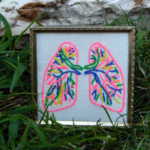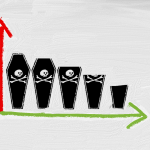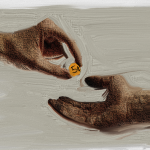How bad is bad – rating cancers

Around 125,000 Australians will be diagnosed with cancer sometime this year. That’s just over 5 new cases per 1,000 Australians. Chances are, someone I know knows some one being diagnosed this year, and they’ll tell me about it. Cancer is never good news. But they’re also not all the same. While some are hard to beat, others have very decent survival rates.
So how bad is my mate’s mate’s cancer?
(This post focuses purely on the likelihood of death as a measure of ‘badness’.)
Some are deadlier than others
One method of comparing a condition’s “deadliness” is the mortality-to-incidence ratio (MIR). The MIR denotes the number of people who die of a particular cancer in a given year, to the number of people diagnosed with the same cancer in the same year. The ratio ranges from 0 to 1, and the lower the value the longer one is expected to survive. A MIR of 0 means no one dies of that particular cancer.
The 10 most common cancers in 2012, in terms of incidence, accounted for 71% of new cases. These cancers, listed below, have MIRs ranging from 0.13 to 0.90. That’s to say, some common cancers are 8 times as deadly as other common cancers.

In short, lung and pancreatic cancers have a much worse outlook than prostate, breast or melanomas.
Visualising MIR’s results
The MIR has a huge impact on how many people die from a particular cancer, compared to how many are diagnosed with it. For example, even though prostate cancer impacts 8 times as many people as pancreatic cancer (20,637 vs 2,383), both claimed roughly the same number of lives in 2012 (3,173 vs 2,437). The graph below shows the incidence and mortality of Australia’s 21 most common cancers.

How bad is bad: not as bad as it used to be
Huge improvements in survival rates are being made across most cancers. Over the past 30 years, 8 of the top 10 cancers saw large drops in mortality ratios. The two most common cancers, prostate and breast, are now less than half as deadly as they were in the early 1980s. Unfortunately, progress has been less effective for bladder cancer, which has in fact gone backwards, by 39%.

* 1982 MIRs are age-adjusted based on the 2012 population, to make the figures more comparable.
** Care must be taken when comparing colon and rectal cancers over time, as it is likely that the figures are disturbed by coding changes, thus may not reflect real changes in survival rates
Neither me nor my mate’s mate get a say on which cancer they have, but it does help to know that treatments and support are improving every year.
Salud
Source:
All data used sourced from the AIHW’s Australian Cancer Incidence and Mortality (ACIM) books.
http://www.aihw.gov.au/acim-books/
















